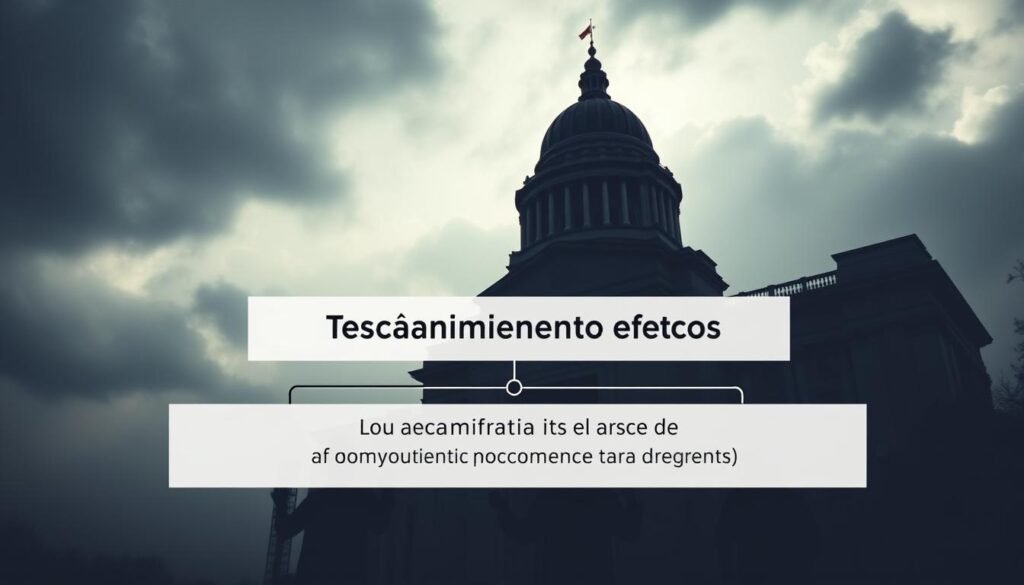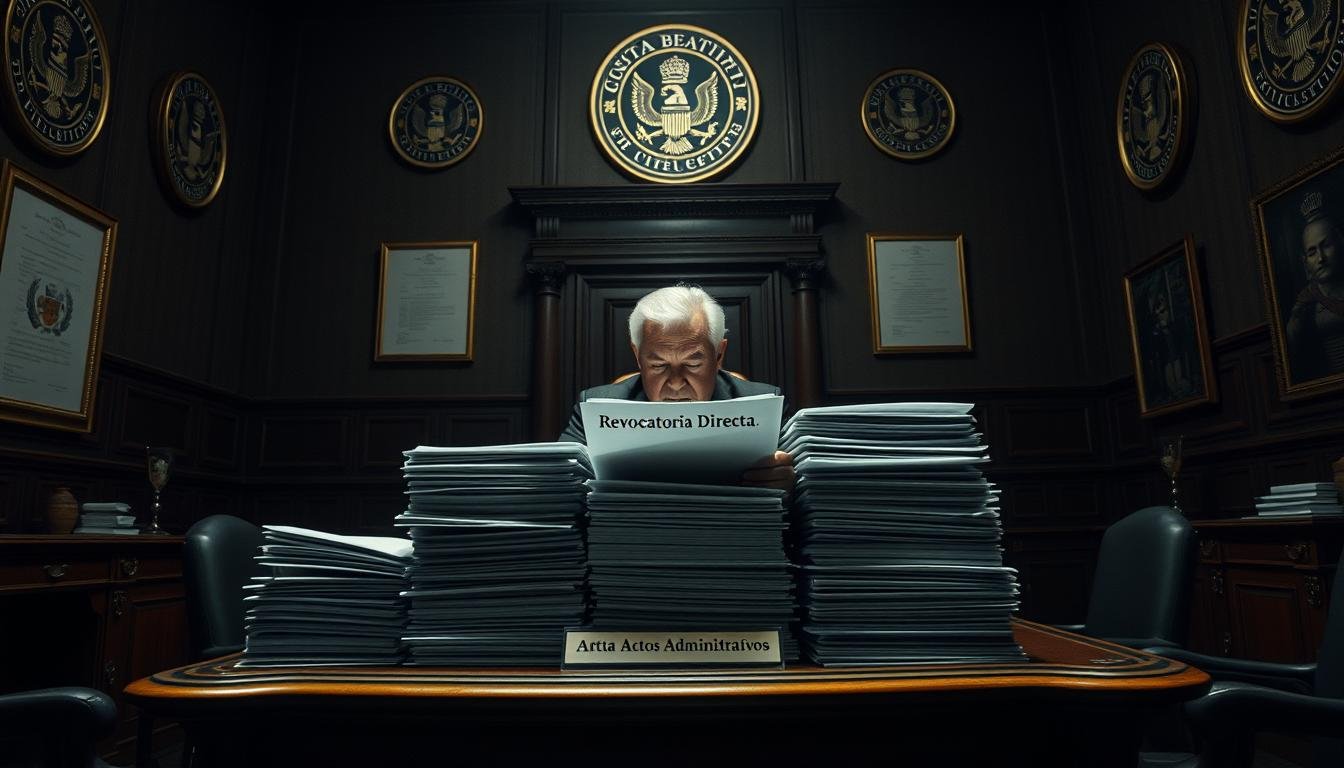One in four municipal decisions in Colombia faces administrative review within three years, and that reality shapes how I advise public entities and private contractors.
I guide teams through the CPACA framework so they can lawfully extinguish a contested acto and protect institutional goals. My work blends practical filing strategies with legal precision.
I map the acto, its efectos, and linked actos across the administrative life cycle. This lets me choose whether to seek revocatoria, a formal correction, or acknowledge loss of force under the correct artículo and ley.
I focus on governance checkpoints: legal review, committee approvals, and a defensible presentación that aligns procurement and sanctioning timelines. When an internal path is blocked, I preserve a record ready for the jurisdicción contencioso administrativo.
Key Takeaways
- I explain how administrative extinction differs from judicial annulment and why that matters.
- I build revocation-ready files with clear artículo and ley support.
- I align procurement and sanctioning workflows to reduce legal risk.
- I preserve litigation-ready records for the contencioso administrativo if needed.
- I prioritize public interest while safeguarding due process and fines.
Understanding revocatoria directa actos administrativos in Colombia today
I help public teams and counsel weigh when an internal review path can extinguish a controversial measure without going to court.
What this tool is: it allows the administración to undo an acto administrativo by its own will, based on specific artículos of the CPACA and applicable ley. This differs from a judicial annulment before the sala contencioso administrativo, where the jurisdicción contencioso administrativo decides on legality and effects.
Why timing matters: requests must be decided within two months. Once the auto admisorio demanda is notified, no internal undoing is possible. That timing affects publicación schedules, bidder participación, and procurement milestones.
- I map caducity risks like caducidad control judicial and explain cuales operado caducidad so your parte can act in time.
- I align the ordenamiento jurídico — artículo ley 2080 and doctrine — with practical intake gates for rights (derechos) and public interest (interés).
| Feature | Administrative review | Judicial annulment |
|---|---|---|
| Decision-maker | Administration | Judge (sala contencioso administrativo) |
| Timeline | Two months (CPACA) | Judicial schedule |
| Effect on caducity | Does not revive caducity control | May affect caducity control judicial |
| Limit | No action after auto admisorio demanda | Remains available until final court ruling |
When should I use revocation instead of other administrative tools?
I advise authorities and contractors on a simple choice: revoke, correct, or record that an acto has lost force.
Revocation is appropriate when a legal vice or public interest requires a new decisión that modifies or extinguishes an acto administrativo. It produces a fresh administrative instrument and must meet artículo-based motivation and due process.
Revocation vs decaimiento: practical consequences per Council of State
The Council of State ruled on 04 July 2024 in the UGPP caso that no revocation occurred. Instead, a resolutory condition produced automatic loss of efectos under CPACA (art. 91(4)).
That means you sometimes only need to document loss of enforceability. The acto stays on file but has no operative force. This reduces procedural exposure in the contencioso administrativo when facts, not vices, explain the outcome.
Revocation vs firmness and loss of enforceability under CPACA
- I set a decision path that checks factual predicates, artículo support, and interés general.
- I document conditions unmet or legal repeal to prove decaimiento.
- I reserve revocación when legal defects require corrective authority and a new acto is needed.
Legal grounds for revocation: Constitution, law, and unjustified harm
I map the constitutional and statutory grounds that support setting aside an acto under Colombian law. Below I translate those grounds into practical file elements you can use when advising procurement and sanction units.
Manifest opposition to the Constitution or the law
What to show: the specific artículo and ley breached, citations, and an expert legal note that links the defect to the acto’s carácter.
Contrary to public or social interest
How I argue it: quantify risks to servicio delivery, procurement value, or public policy goals and attach measurable indicators to prove interés público and interés público social.
Unjustified grievance to a person
Evidence checklist:
- Factual timeline linking conduct to agravio injustificado persona.
- Proof of impact on derechos and why less intrusive measures fail.
- Proportional remedy proposal to avoid contencioso administrativo escalation.
| Ground | Key record item |
|---|---|
| Constitutional/ley breach | Citations + legal opinion |
| Public interest | Policy metrics + risk analysis |
| Unjustified harm | Impact evidence + remedy plan |
I also set organizational controls so the autoridad can meet the two‑month decision term and present a defensible parte if the matter reaches the contencioso administrativo.
Procedural guardrails I must respect before revoking

Before changing any public decision, I establish strict procedural guardrails to protect legality and institutional purpose.
I start by confirming which autoridad is competent to act. The same office that issued the original acto may proceed, or the immediate hierarchical or functional superior can take the measure.
De oficio or by petition and the two-month decision window
I set intake rules for a request or an oficio initiation. Either path must produce a reasoned decisión within the two-month artículo term to meet procedural cumplimiento.
No administrative appeal and notification medio
I train teams on the no-appeal rule so internal quality checks happen before issuance. The decisión is not subject to administrative resources and may move to the contencioso administrativo if challenged in the jurisdicción contencioso administrativo.
- I document authority in the acto to avoid competence nullity.
- I create intake templates, file numbers, and assignment rules to meet artículo deadlines.
- I define notification medio and service standards so parties receive a clear audit trail.
| Guardrail | Action | Why it matters |
|---|---|---|
| Competence | Verify autoridad in the file | Avoids nullity and judicial reversal |
| Deadline | Two-month artículo decision | Ensures cumplimiento and legal certainty |
| Initiation | De oficio or petición intake | Records procedural origin and proof |
| Notification | Defined medio and service log | Reduces procedural challenges |
Particular and concrete rights: when consent is mandatory
I evaluate each file to determine if a public decision created a carácter particular concreto that protects a person’s position. When an acto administrativo has recognized or altered a specific right, the rule is clear: consent is required before any revocación.
If the rights holder withholds written consent, the proper route is to bring the matter to the jurisdicción contencioso administrativo. I prepare the authority for that step by assembling the factual record and legal foundation to meet judicial standards in the contencioso administrativo.
How I advise authorities and petitioners
- I classify whether the measure created a protected carácter and thus triggers the consent rule.
- I draft the petición for written consent with precise artículo and ley citations and a clear statement of proportionality and public interest.
- I plan the litigation fallback and craft the record to anticipate judicial review in the contencioso administrativo.
- When fraud or serious illegality appears, I advise suing and requesting provisional suspension without prior conciliation.
- I coach communications to the parte titular of derechos to preserve trust and narrow disputes.
| Scenario | Pre-condition | Typical response |
|---|---|---|
| Consent granted | Written assent from rights holder | Authority proceeds with lawful revocación or correction |
| Consent denied | Part refuses prior written waiver | File claim in jurisdicción contencioso administrativo |
| Fraud suspected | Evidence of illegality or deception | Sue and request provisional suspension immediately |
| Ongoing procurement | Award or sanction affects contracting | I map impacts and keep workflows compliant while seeking consent or court relief |
How courts and pending litigation interact with revocation

I map the precise cut-off points in contestation processes so clients know when internal fixes remain available.
No revocation after the auto admisorio demanda is notified
I first verify whether the auto admisorio demanda has been notified. Once notification occurs, the matter moves to the sala contencioso administrativo and the authority cannot lawfully revoke the measure inside its office.
Revocation requests do not revive judicial caducity terms
I advise that a petición for revocation, or an internal decisión on it, does not reset any timetables for judicial challenge. This includes caducidad control judicial concerns and cases where one must determine cuales operado caducidad or whether operado caducidad control applies.
Offer of revocation during trial with Committee approval
Before second-instance judgment, I prepare an offer package the autoridad can submit with prior Committee approval. This includes draft actos, compliance remedies, and an analysis of relevant artículo requirements and public finance limits.
- I coordinate filings so the judge in the contencioso administrativo can evaluate the proposal and, if appropriate, order termination by an executable auto.
- I assess risks on costs, interest, and compliance to decide if a settlement-like offer is preferable to defense in the contencioso administrativo.
- I log the orden of steps and keep records to preserve institutional learning for future cases.
| Stage | Effect | Action |
|---|---|---|
| Pre-notification | Authority may revoke | Prepare paquete with Committee memo |
| After notification | Case with sala contencioso administrativo | Coordinate judge notice and defense |
| During trial offer | Judge can end process by auto | Submit draft actos and obligations for approval |
Step-by-step: How I prepare and file a revocation request
I translate case facts into a prioritized evidence list and the exact statutory claim needed for a timely request. This first diagnostic ties facts to the correct artículo and the relevant ordenamiento jurídico so the petition rests on clear law and proof.
Diagnosing the causal ground and compiling evidence
I build a diagnostic matrix that maps each factual thread to a legal ground under ley and artículo. Documents, technical reports, and witness memos get ranked by probative value.
I flag gaps early so proof-taking can be planned without prolonging the procedimiento administrativo.
Drafting the petition: facts, law, and requested effects
I draft the petición with a concise facts section, statutory citations, and the efectos sought. Where applicable, I include replacement orden language so the autoridad can sign a clear final documento.
Tracking deadlines and proof-taking suspensions
I create a presentación protocol: annex indices, routing steps, and a medio of notification. This keeps the file traceable and court-ready for the contencioso administrativo if challenged.
- I put a deadline tracker in place that alerts on the two‑month decision term and accounts for suspensions while proofs are taken.
- I align complementarios — corrections, communications, and parallel actos — to avoid inconsistent orders that would weaken the final decision.
- I preserve service receipts and logs so the administrative record proves proper notification and delivery.
| Step | Deliverable | Why it matters |
|---|---|---|
| Diagnosis | Matrix tying facts to artículo | Focuses evidence and legal theory |
| Draft | Petición with efectos and draft orden | Speeds lawful finalization by autoridad |
| Presentation | Annex index & medio of notification | Creates audit trail for contencioso administrativo |
Decaimiento explained: losing force vs revoking the act

I help teams spot the precise triggers under CPACA that convert an administrative instrument into a non‑enforceable record, avoiding needless litigation.
Conditions for loss of enforceability under CPACA
What removes force: judicial suspension, disappearance of factual or legal foundations, five years without execution, resolutory conditions met, or repeal by ley.
I teach a short practical test your office can apply to each acto administrativo so staff know when the item remains on file but lacks efectos.
Case snapshot: UGPP pension grace decision and conditional efficacy
In the UGPP caso (04 July 2024) a resolutory condition for a pension grace benefit failed. Under CPACA art. 91(4) the instrument lost enforceability by operation of law in conformidad with the artículo.
I prepare a reasoned memo documenting decaimiento respecto of the instrument, noting any impacto on carácter or a carácter particular concreto for beneficiaries.
- I convert CPACA causes into evidence thresholds and sign‑off steps.
- I map whether a modificado artículo ley or repeal removed the legal basis.
- I align communications and process changes in procurement and contencioso administrativo strategies.
| Trigger | Proof | Effect |
|---|---|---|
| Judicial suspension | Court order | Loss of enforceability |
| Resolutory condition | Factual report | No ejecutable efectos |
| Legal repeal | Updated ley text | Basis removed |
If litigation relates, I coordinate positions with the sala contencioso administrativo so the authority’s file and the contencioso administrativo posture stay aligned. For practical help, see my team of abogados especialistas en derecho administrativo.
State contracting focus: revoking the acto de apertura
I advise procurement teams on when to pause a tender and correct the opening document to protect public resources.
Why the opening act retains general character through proposal stages
The acto de apertura keeps a carácter general during publicación and participación. That means the administrative act remains aimed at the market, not at a particular bidder.
Protecting the public interest and procurement purposes
I craft the legal motivation to show conformidad with the applicable artículo and the broader ordenamiento. The priority is the interés público and the interés público social behind procurement fines and goals.
Revocation de oficio or on request without bidder consent
I map whether to proceed de oficio or on request. When prior studies or technical files contain errors, the administración may correct or extinguish the opening act without bidder consent.
- I draft a clear decisión and a replacement acto administrativo.
- I design communications to explain the change and reduce disputes.
- I assess schedule impacts and add risk controls for future procedures.
| Option | Trigger | Effect |
|---|---|---|
| De oficio correction | Flawed prior study | New decisión preserves procurement aims |
| Request-driven action | Third-party petition | Same legal motivation, public notice |
| Market communication | Publication of reasons | Minimizes contencioso administrativo risk |
Correcting formal errors vs revoking: choosing the right fix

I show agencies when a quick correction will restore clarity without upending a prior decision. Under CPACA art. 45, simple errors—arithmetic, typing, or transcription—can be fixed so the original efecto stands.
CPACA allows arithmetic, typing, and transcription corrections
What this means in practice: a correction fixes form, not substance. It preserves the legal alcance of the acto administrativo and keeps procurement or sanctioning timelines moving.
When a formal correction is sufficient and when it is not
I use a clear decision rule to choose the correct medio. If the change alters políticas, derechos, or core decisiones, a correction is improper and a new orden or revocation path is needed.
- I set criteria under artículo 45 to decide when a correction is the proper medio and to ensure cumplimiento with ley.
- I provide templates for arithmetic, typing, and transcription fixes that state scope and preserve original decisiones.
- I map the orden of issuance, notification, and repository updates so the corrected acto is traceable in the file.
- I flag red lines where substance would change; those require a new acto and fuller justification.
- I document every step to resist procedural challenge and keep procurement or sanctioning moving efficiently.
| Issue | Fix | When to avoid |
|---|---|---|
| Arithmetic error | Correction under artículo 45 | Changes award amounts or allocation rules |
| Typing/transcription | Clarifying amendment | Alters rights or deadlines |
| Omitted word or clause | Annexed correction with notice | Creates new obligations or exemptions |
Sanctioning and coactive collection: where revocation fits
I design collection strategies that preserve recovery options while respecting due process and suspension rules. My focus is practical: which titles become enforceable, which measures you can challenge, and how suspension affects recovery.
Titles for coactive collection and the effect of suspension measures
Títulos ejecutivos include executory administrative instruments imposing liquid sums, final judicial decisions, contracts with guarantees, and the administrative order declaring breach or caducity. These form the enforceable base for coactive collection under the applicable artículo rules.
Which acts in the collection pathway are challengeable
Only specific decisions are demandable before the contencioso administrativo: those that decide exceptions, order execution forward, or liquidate the credit. Filing a claim generally does not suspend collection unless the title is provisionally suspended by court order.
- Map titles: identify the exact acto or orden that creates the executive title and attach proof of liquid value.
- Manage suspension: advise on when a judicial suspension or a debtor petition affects cumplimiento without freeing guarantees.
- Preserve recovery: reissue a corrected sanction order when necessary to keep collection on track.
| Title type | Challengeable item | Suspension effect |
|---|---|---|
| Executory sum | Liquidation order | Suspension may stop execution; guarantees remain |
| Contract + guarantees | Declaration of breach | Judicial suspension does not lift cautions |
| Judicial decision | Enforcement order | Provisional suspension halts collection steps |
Extension of unification jurisprudence under Ley 2080 of 2021
I show how Council of State unification rulings can be extended to benefit petitioners who share identical facts and legal grounds. This mechanism, modificado by ley 2080 2021, helps authorities and partes rely on settled doctrine when deciding on internal remedies.
Using the Council of State’s unification rulings to support revocation
When a unification ruling recognizes a right, the autoridad must consider extending that outcome to other petitioners in conformidad with the controlling decision.
My role is to identify the controlling decision, show factual parity, and craft a reasoned petición that quotes the applicable artículo and the modificado artículo ley language.
Petition requirements and timelines for extension
The petition must include a clear justification, supporting evidence, and a reference to the unification ruling. Authorities decide in 30 days.
If the request is denied or silent, the parte has 30 days to seek relief before the Council of State. The presentación suspends judicial filing deadlines in the contencioso administrativo.
- I draft petitions meeting artículo ley 2080 standards and align annexes to show identical factual posture.
- I explain decision outcomes and integrate extension with your broader strategy.
- I prepare the 30‑day follow‑on route to the Council of State if needed.
| Requirement | What I prepare | Timing |
|---|---|---|
| Reasoned petition | Facts + citations to modificado artículo ley | 30 days decision |
| Evidence | Annex index tying your parte to precedent | Supports presentación |
| Adverse decision | Appeal package to Council of State | 30 days to file |
For practical drafting and review, I also prepare model petitions and annexes and can assist with a tailored presentación. See related guidance on state contracting limits and inhabilidades.
Compliance checklist for authorities and petitioners
I provide concise checklists and coaching so Colombian contracting and sanctioning teams can act within CPACA standards and petitioners can frame persuasive requests.
Authority-side do’s: motivation, due process, and interest balancing
Authority checklist:
- Identify the supporting artículo and cite the applicable ley in the file.
- Draft a robust, reasoned motivation that shows conformidad with policy and the interés general.
- Respect hearing and defense rights; record notifications, participación, and responses.
- Sequence actions in clear orden to preserve due process and prevent nullity.
- Assess private impacts, especially any agravio injustificado persona, and document proportionality.
Petitioner-side do’s: causality, evidence, and strategy alignment
Petitioner checklist:
- Frame a precise causal theory linking facts to the cited artículo.
- Assemble probative evidence that protects relevant derechos.
- File a clear petición that ties documents to legal requirements and explains requested effects.
- Anticipate deadlines and preserve service receipts to secure judicial defensibility.
- Use participation and communication practices to reduce conflict and preserve legitimacy.
| Role | Key Action | Why it matters |
|---|---|---|
| Authority | Motivate decision with artículo and ley citations | Ensures cumplimiento and resists procedural annulment |
| Petitioner | Link evidence to causal theory in petición | Improves chances of timely and favorable review |
| Both | Document orden, notifications, and participación | Creates a reliable audit trail for contencioso review |
Quality gates for compliance: I require checklist sign‑offs before finalizing any change. This keeps the file defensible and aligned with CPACA timing and rights protections.
How I advise on state contracting and sanctioning processes
I run a focused diagnostic on each procurement decision to match facts to the correct procedural tool and timing under CPACA.
Risk screening is the first step. I compare three responses: revocatoria, a new revocación acto, or recognizing loss of force (decaimiento).
I quantify exposure across timelines, budgets, and service delivery. That analysis shows whether the entidad should act now or preserve leverage for the contencioso administrativo.
Designing document and litigation strategy
I build the core record to support the chosen route. Drafting includes clear orden language, statutory citations, and a mapped list of efectos on procurement and sanctions.
I coordinate with litigation to time potential filings in the jurisdicción contencioso administrativo and to keep options open if a parte challenges the decision.
- I benchmark prior caso patterns to anticipate objections.
- I set Committee reviews and sign‑offs to secure governance and execution order.
- I embed interest narratives to justify public value and sustain decisions under scrutiny.
| Task | Deliverable | Benefit |
|---|---|---|
| Risk screen | Comparative chart: revocatoria / revocación / decaimiento | Quantified exposure and timing clarity |
| Record drafting | Draft decision, annex index, efectos analysis | Defensible file for administrative and judicial review |
| Litigation coordination | Timing memo for contencioso administrativo filings | Maintains leverage and limits procedural surprises |
| Governance | Committee memo and sign‑off checklist | Institutional coherence across directorates |
Conclusion
Conclusion
I end with a clear operational plan so authorities and market participants can act confidently under CPACA.
I summarize how to align actos administrativos with artículo standards and sector policy to produce durable outcomes. I restate how to choose the right medio and when to pivot to judicial relief in the contencioso administrativo.
I emphasize protecting derechos and defining the carácter and scope of each acto with precise motivation to withstand review.
Institutional benefits are real: documented roles, clear timelines, and focused evidence reduce risk and speed resolution. If you are a parte or public entity, contact me to scope next steps, assign responsibilities, and deploy a tailored plan in conformidad with ley and best practice.

